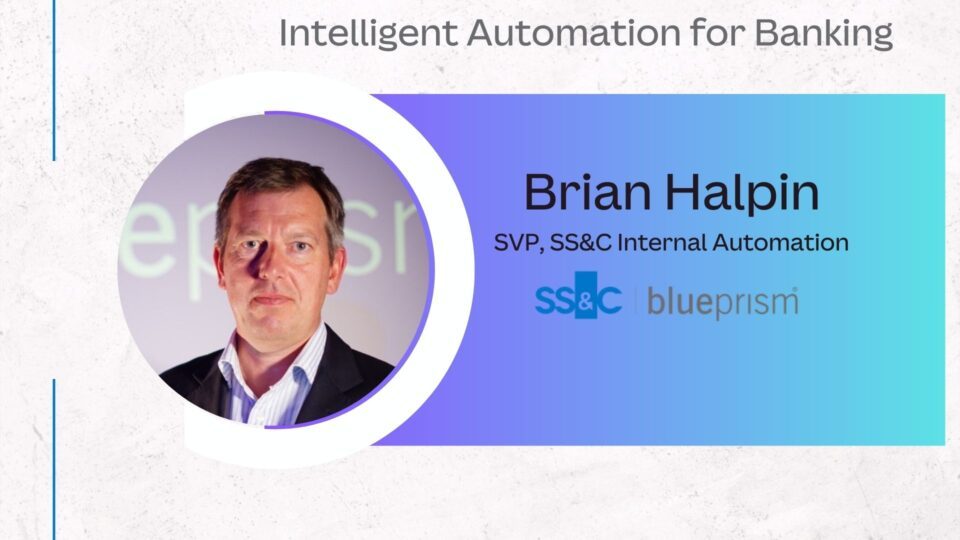Automation technology could add $2 billion in annual value to the global banking sector through revenue increases, cost reductions and unrealized opportunities. Yet the benefits of automation remain largely untapped. This is because of the significant challenges of integrating automation, which hamper digital transformation efforts, including lack of a clear implementation strategy, insufficient executive support and severely limited use of automation within corporate departments.
Despite this, the opportunities offered by the strategic use of intelligent automation in banking institutions are becoming increasingly clear. A combination of different automation technologies could help counter the inevitable competitive pressures created by rising customer expectations of digital banking.
Since the onset of the coronavirus pandemic, financial institutions have been increasingly deploying intelligent automation and extending the benefits to their customers. As a result, the way financial services are traditionally discovered, evaluated, purchased and delivered is being challenged, making intelligent automation essential for future competitiveness and differentiation in the industry.
Automation offers multiple benefits for the financial sector
Significant benefits from automation can be observed in terms of productivity, accuracy and speed. Intelligent automation not only delivers significant cost savings to companies but also relieves them of the time spent manually moving, collecting and posting data between different systems. Customer, employee and supplier satisfaction all increase because requests can be responded to more quickly. Instead of focusing on tedious and repetitive tasks, employees can devote their focus to essential work.
Month-end accounting: The import and export of data between DATEV and SAP can be automated. During the process, the robot checks the various entries in different accounting systems and supports financial statements and reports.
Duration of payment flows: In the case of invoices, software robots can check that all legally required information is included. The robot can also ensure that the system is supplied with all relevant data, enabling the company to realize unforeseen cost savings. This can reduce the time spent on payment flows to only a few hours rather than several days, which ensures payment targets are met.
Adding new suppliers: Automation can be used for the procurement of required information, such as tax data, and can model this information in the respective systems. Without automation, onboarding new suppliers is a time-consuming process, requiring different systems be manually fed data in order to provide all departments with access to the relevant information relevant.
Accounts Payable: Software robots can use intelligent OCR software to extract data from invoices received by email and validate the information, such as purchase order number, number of items and cost per item, against the purchase order and goods received.
Controlling/Reporting: Automation offers improved data analysis and faster data processing, facilitating quicker and more informed decisions. Reporting is optimized as information from different sources is aggregated and processed according to institution’s specific rules and report results are made more plausible.
Payroll: In the case of data from multiple systems, such as employee management, time recording, human resources and accounts payable and general ledger accounting, software robots can help collect the required information, relate and connect the data and then output the payroll.
Case study: European bank cuts customer wait time from 12 days to four hours
In one of our case studies, one of Europe’s oldest and largest banks, serving more than 10 million customers globally, has significantly improved its service quality, speed-to-market and customer satisfaction through SS&C Blue Prism intelligent automation. The technology enables the bank to manage operations across legacy systems with APIs to bridge systems and troubleshoot issues. This has significantly increased the overall effectiveness of the business as measured by higher transaction volumes, better regulatory compliance and improved service quality, availability and timeliness. The digital robots deployed take on numerous and various roles, including Chatbots that automate requests from customers for account statements; accountants that read income statements from customers, saving time for their front-line ‘colleagues’; and work schedulers that park payments during peak hours to make servicing less expensive.
These digital robots enable the bank to quickly develop and deploy processes that help customers access government pandemic and relief funds. Core banking services, such as loan approvals that previously took twelve days, are now provided to customers within four hours, representing a tremendous increase in customer value. Furthermore, detailed compliance reports for multiple national and European authorities and jurisdictions are compiled and formatted by digital robots for human review and approval.
How can banks maximize the benefits of intelligent automation?
- Adopt a strategic mindset: Without a transformative view and an enterprise-wide vision emanating from the executive level, the strategic use of automation for productivity and empowerment will be undermined by initiatives that narrowly focus on easy to measure cost savings and cost avoidance.
- Approach implementation from the customer’s perspective: When implementing automation, companies should start with an external focus on customers and competition, using that perspective to design an end-to-end business process architecture that accelerates digital innovation. By looking at the business from the customer’s perspective, they can use automation to improve every aspect of the customer experience rather than just “getting things done faster.”
- Always feed the automation pipeline: Building a robust in-house automation capability creates flexibility and a knowledge base that, with strong governance, ensures institutional resilience
- Think long term: The long-term strategic effectiveness and value of intelligent automation far exceeds short-term efficiency gains but realizing these benefits requires strategic planning with forethought
Business process automation offers the financial industry the opportunity to diminish the administrative burden for customers and employees. Because of this, intelligent automation is becoming a critical success factor in the banking sector. In the coming years we expect to see an increase in automation so that financial institutions can remain competitive and survive on the market in the long term.
